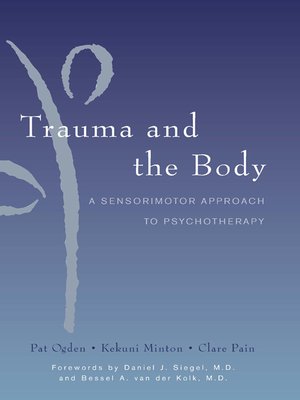Trauma and the Body
ebook ∣ A Sensorimotor Approach to Psychotherapy (Norton Series on Interpersonal Neurobiology) · Norton Series on Interpersonal Neurobiology
By Kekuni Minton

Sign up to save your library
With an OverDrive account, you can save your favorite libraries for at-a-glance information about availability. Find out more about OverDrive accounts.
Find this title in Libby, the library reading app by OverDrive.



Search for a digital library with this title
Title found at these libraries:
| Loading... |
The body, for a host of reasons, has been left out of the "talking cure."
Psychotherapists who have been trained in models of psychodynamic, psychoanalytic, or cognitive therapeutic approaches are skilled at listening to the language and affect of the client. They track the clients' associations, fantasies, and signs of psychic conflict, distress, and defenses. Yet while the majority of therapists are trained to notice the appearance and even the movements of the client's body, thoughtful engagement with the client's embodied experience has remained peripheral to traditional therapeutic interventions. Trauma and the Body is a detailed review of research in neuroscience, trauma, dissociation, and attachment theory that points to the need for an integrative mind-body approach to trauma. The premise of this book is that, by adding body-oriented interventions to their repertoire, traditionally trained therapists can increase the depth and efficacy of their clinical work. Sensorimotor psychotherapy is an approach that builds on traditional psychotherapeutic understanding but includes the body as central in the therapeutic field of awareness, using observational skills, theories, and interventions not usually practiced in psychodynamic psychotherapy. By synthesizing bottom-up and top down interventions, the authors combine the best of both worlds to help chronically traumatized clients find resolution and meaning in their lives and develop a new, somatically integrated sense of self.Topics addressed include: Cognitive, emotional, and sensorimotor dimensions of information processing • modulating arousal • dyadic regulation and the body • the orienting response • defensive subsystems • adaptation and action systems • treatment principles • skills for working with the body in present time • developing somatic resources for stabilization • processing






